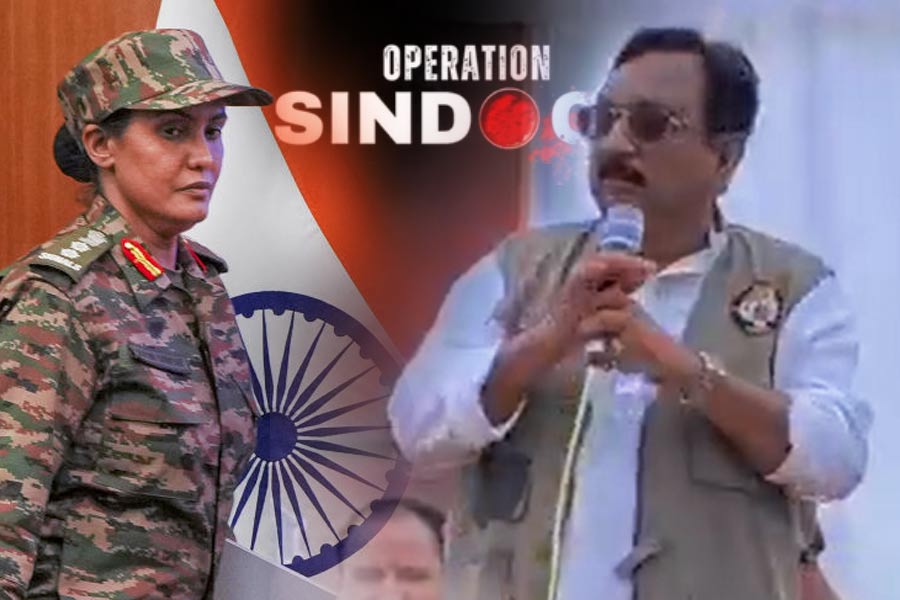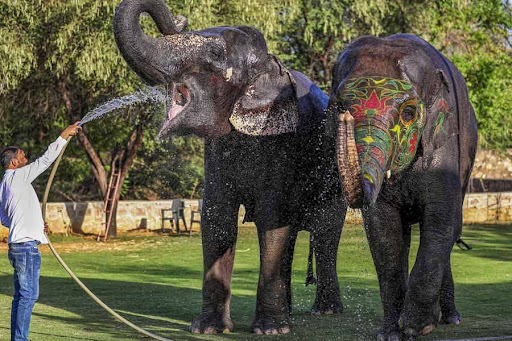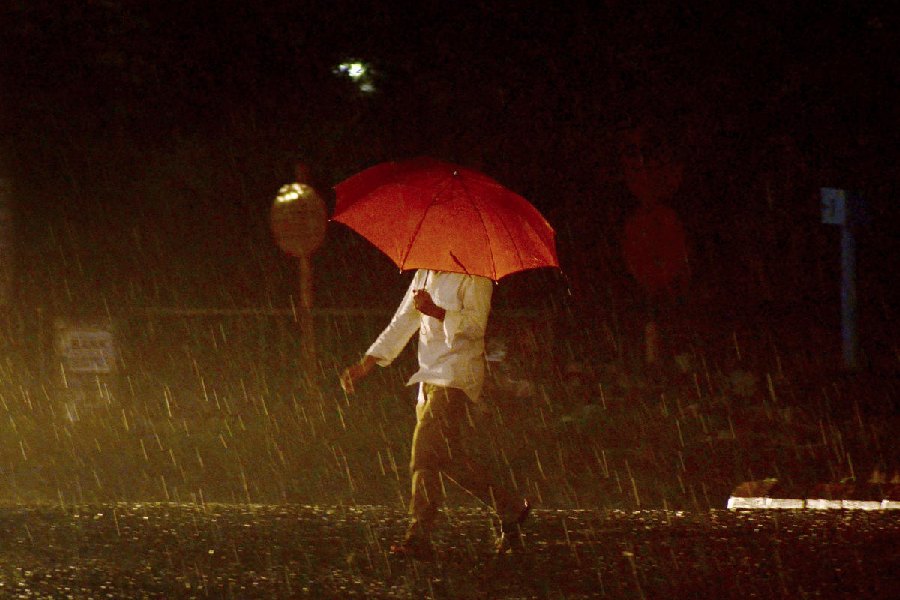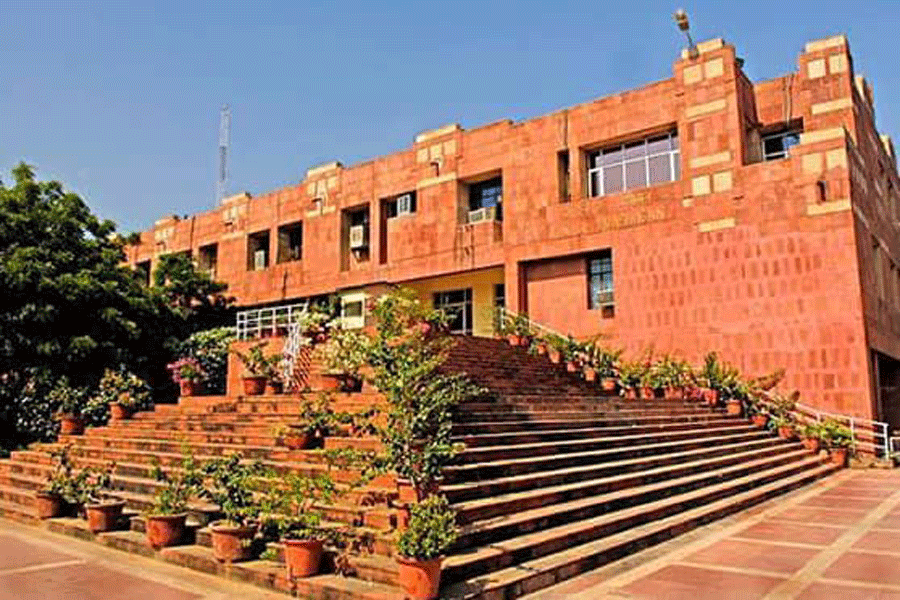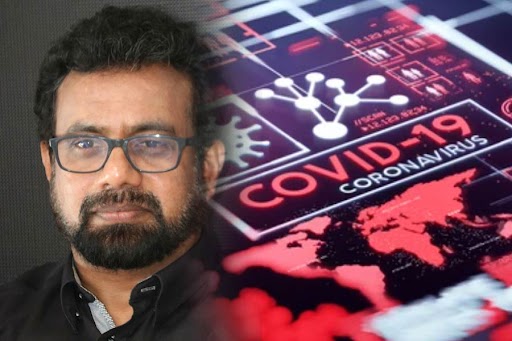 |
2006 West Bengal Election
Exit polls predict: Left front will win 207 seats
Reality: ???
* Figure based on exit polls following the fourth phase
2004 Lok Sabha Election
Exit polls predict: BJP will win 250 seats.
Reality: BJP loses, gets 185 seats
The Left Front is expected to get around 120 seats after the third phase of elections.” “The Trinamul Congress may see some seats swing in its favour due to the anti-incumbency factor in areas of North Bengal.” “The Congress may lose its headstart in Murshidabad and Malda.”
Day in and day out, one is constantly bombarded with such statements on television channels, in newspapers and magazines. Tables, charts and bar diagrams show why a particular party will win or lose seats and votes. There is nothing easy about predicting election results, never mind whether it is before or after the ballot has been cast. The best statistical tools can flounder, the most logically-derived figures may be proved wrong.
But that does not deter poll pundits from working on the electoral process in the world’s largest democracy. So you like or not, you’ll see more charts drawn, more trends analysed ? just for getting a taste of what is going to come before the actual results are declared.
Thanks to the glut of Bangla TV news channels, this year’s elections in Bengal witnessed a large number of exit polls. You, however, have to wait till May 11 to know whether any of these results is correct. Whether correct or false, exit polls are here to stay since they receive enormous publicity. Remember, there were so many exit polls in the 1999 general elections that the Chief Election Commission (CEC) had apprehended that they might unknowingly influence the polling process. And in the 2004 general elections, the exit polls of leading news channels had predicted a 230-290 seats for the National Democratic Alliance (NDA), and a 150-200 seats for the Congress. Today we have a Congress-led government at the Centre.
The statistical technique
What then is the chemistry of success in an exit poll? What goes wrong when the predictions turn out to be incorrect?
Rajeeva L. Karandikar, a former professor of statistical mathematics at the Indian Statistical Institute, New Delhi, says the primary statistical technique is choosing the appropriate samples. Research agencies concentrate on certain constituencies or samples before randomly asking for voting patterns. “The basic premise underlying an exit poll is that one does not have to go to everyone to know what will be the outcome. The idea is to take samples that represent the overall composition of voters and calculate the results,” says Jasojit Mookerjea, senior vice-president and executive director, IMRB International, Calcutta.
The pollster’s job, however, is getting more and more difficult with the Indian polity becoming increasingly fragmented. With many local parties emerging as formidable entities at the national level, samples and voting patterns are becoming tougher to determine. Moreover, in a country as diverse as India, the characteristics of the electorate are just too many to be incorporated in any statistical model. The most difficult task, therefore, is choosing representative constituencies or samples.
 |
According to Mookerjea, sampling has to be very important in any election-related poll. The challenge for any poll agency is how best to select samples that will adequately represent the voters in a particular constituency, he adds. This is best exemplified by a pot of boiling rice. You can make out whether it has boiled properly by feeling a single grain of rice. If the pot contains dal and potatoes as well, the process becomes more complex.
Another major problem faced by pollsters is that different factors affect the polls at different places. For instance, in UP or Bihar, caste is a major deciding factor, in West Bengal, unemployment is a significant one.
Therefore, a lot of thought and study has to go into selecting truly representative samples. The key to making an accurate forecast in the Indian context would be selecting 108 constituencies and 50,000 voters at random. “I believe this is the ideal sample size for a country like ours,” he says. “In theory, the larger the sample size, the better it is, but that will also mean logistical difficulties that could translate into errors.” .
Two types of errors
Mookerjea explains that there can be two types of errors ? sampling and non-sampling. The first can be calculated using statistical laws. Mahesh Rangarajan, the political analyst, attributes non-sampling errors to pollsters being ignorant of the enormous political changes that have taken place in India since the late eighties. “They may provide the right numbers but be wrong in details,” he says. He cites the 1989 exit polls conducted by a leading English TV channel as an example when the number of seats won by the Congress was correctly predicted but the distribution of seats was incorrectly conceived.
These errors often irk political parties, which call for banning such polls. “I am categorically rubbishing exit polls,” says Tathagata Roy, president of the Bharatiya Janata Party (BJP) in Bengal. “Honestly, I cannot even think of an exit poll that could be construed as accurate.” At the same time, exit polls have been accused of producing manipulated results. It is also alleged that exit polls survey people who are economical with the truth. “Quite simply, exit polls are bogus since there is no evidence whatsoever that they produce reliable results,” says Saugata Roy, a senior Trinamul MLA.
Rangarajan, however, emphasises that even though a small sample size is involved, “it’s no reason for contemptuous dismissal of exit poll results”. Even Mookerjea agrees that the element of error in most results is less than two per cent.
Exit polls are also subjected to the human tendencies of lying, indecisiveness and fear, which pose a problem for statisticians. Mookrejea says, “In exit polls, there may be an element of bias either because people lie or they are afraid. This may be due to the low awareness of exit polls in our country. Moreover, many people may not be comfortable sharing details of their preference.” Hence exit polls include questions that statisticians believe would help them separate the lie from the truth.
Karandikar has a different view though. He says, “Voting is not a logical decision based on 10 variables. It is a complex phenomenon. We may introduce more errors if we try to correct a respondent’s answer about his/her voting preferences based on his/her answers on other questions. As long as there is no fear element, it would be best to take the answers at face value.”
However, others say that exit polls could be more effective if they were based on more scientific research and less business orientation. Says Pradip Bhattacharya, working president of the West Bengal Pradesh Congress Committee, “It’s important for pollsters to understand the scientific methodology that is all too often ignored in exit polls.”Says Manab Mukherjee, minister of iformation technology in West Bengal, “Exit polls, if conducted scientifically, can actually prove to be a boon to the electoral process if they produce accurate results.” The minister cites the growing popularity of exit polls in the West to assert that they can prove effective.
“Political awareness can be one factor for the effectiveness of exit polls in the West,” says Rangarajan. But he is quick to acknowledge that they can go wrong as well. He and Tathagata Roy cite the 2004 Lok Sabha Elections as a classic example of exit poll failure since no exit poll had predicted a victory for the Congress. “The last West Bengal Assembly elections also proved to be a failure for exit polls when the Trinamul was granted a majority,” says Saugata Roy. .
Changing nature
So how are exit polls conducted? They are conducted either by a secret ballot, which is based outside a polling booth, or questions are posed orally. Some of the questions that are asked include name, sex, caste, education, occupation and which party the vote has been cast to get an idea of the voter.
With improved technology and computer modelling, the nature of exit polls is changing. Politicians like Mukherjee are optimistic. Statisticians like Karandikar are also now attempting a different technique in exit polls for a newly launched English TV channel on behalf of the Delhi-based Centre for the Study of Developing Societies.
In the Bengal polls, Karandikar has chosen to conduct exit polls[on behalf of the news channel CNN-IBN] one day after the polling and give exit poll results only after the final phase. This would ensure that the voter is not caught unawares and that there are not too many numbers to handle and one can arrive at close to the actual poll result. He only wishes that research agencies were allowed to publish their methodology to make the process transparent.





